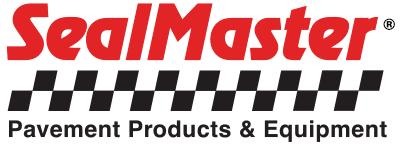Sealcoating Specifications
Liquid Road for Parking Lots Tech Data
Liquid Road for Application on Parking Lots
Product Description
LIQUID ROAD is a polymer-modified, fiber reinforced asphalt emulsion coating that is job-mixed with specially graded aggregate and applied to pavement surfaces. The result is a highly durable, slip-resistant surface treatment that greatly extends pavement service life. Liquid Road meets ASTM D8099/D8099M-17 Stan-dard Specification for Asphalt Emulsion Pavement Sealer.
Recommended Uses
Liquid Road is a premium grade pavement coating that is ideal for all types of pavement surfaces including parking lots, shopping malls, airports, driveways, roadways and more. This specification pertains to Liquid Road application on parking lots. For Road and street applications please refer to technical data sheet SMT-333.
Estimating Material Requirements
One gallon of Liquid Road will cover approximately 55-66 square feet (6-7.5 square yards) per coat when properly mixed and applied.
Application Rate of Mixed Materials
Apply properly mixed Liquid Road (Liquid Road and Aggregate) at a rate of 45-55 square feet (5-6 square yards) per gallon per coat. Application rates may vary due to pavement porosity and method of application. Multi-coat application is recommended for optimum durability (See APPLICATION PROCEDURES below.)
TABLE 1 – PHYSICAL PROPERTIES OF LIQUID ROAD AS SUPPLIED WITHOUT SAND
TABLE 2 – PHYSICAL PROPERTIES OF LIQUID ROAD JOB-MIXED WITH SPECIFIED AGGREGATE AND READY FOR PARKING LOTS APPLICATION (see table 3 for Aggregate Specifications)
Surface Preparations
Surface must be clean and free from loose material and dirt. Cracks should be filled with SealMaster Cold Pour or Hot-Applied Crack Filler. Oil stains should be cleaned and primed with SealMaster Oil Spot Primer.
Application Equipment
Liquid Road shall be applied by mechanical squeegee/brush equipment and spray equipment capable of spraying coatings with sand. Equip-ment shall have continuous agitation or mixing capabilities to main-tain homogenous consistency of Liquid Road and Aggregate mixture throughout the application process. Truck mount or self-propelled squeegee/brush equipment shall have at least 2 squeegee or brush de-vices (one behind the other) to assure adequate distribution and pen-etration of Liquid Road into bituminous pavement. Hand squeegees and brushes shall be acceptable in areas where practicality prohibits the use of mechanized equipment.
TABLE 3 – LIQUID ROAD AGGREGATE SPECIFICATIONS FOR ROAD APPLICATION
Mixing Procedures
For application on parking lots mix Liquid Road in accordance with the following mix design (based on 100 gallons of Liquid Road for ease of calculation):
Liquid Road…………………… 100 gallons
Sand (20-30 mesh)……….. ……..400 lbs.
Note- See Table 3 – Liquid Road Aggregate Specification for Road Application
Application Procedures
To achieve optimum performance and the desired results for Liquid Road it is important to follow proper application procedures. Liquid Road is a three coat process.
1.) Apply, by squeegee application, the first coat of mixed Liquid Road and Sand to all drive lanes, entrances, exits and high traffic areas (excluding parking stalls) at a rate of 45-55 square feet (5-6 square yards) per gallon. Allow first coat to dry thoroughly before applying the second coat.
2.) Apply, by squeegee, the second coat of mixed Liquid Road and Sand to the entire pavement surface at a rate of 45-55 square feet (5-6 square yards) per gallon. Allow second coat to dry thoroughly before applying the third finish coat.
3.) Apply, by spray application, the third coat (finish coat) of mixed Liquid Road and Sand to the entire pavement surface at a rate of 45-55 square feet (5-6 square yards) per gallon. Allow final coat of Liquid Road to dry 24 hours prior to opening to traffic.
Application Conditions
Liquid Road shall not be applied when temperature is expected to drop below 50°F during application and for a period of at least 24 hours after application.
Line Striping and Traffic Markings
Use SealMaster 100% Acrylic Traffic paint for line striping and traffic markings.
Cautions
Both surface and ambient temperature shall be a minimum of 50°F and rising during Liquid Road application. Do not apply if temperature is expected to drop below 50°F within a 24 hour period after Liquid Road application.
Packaging and Availability
Liquid Road is available in 5-gallon pails, 55-gallon drums and bulk tanker load quantities. Liquid Road is supported by a national network of SealMaster manufacturing facilities along with a national network of qualified applicators.
Warranty and Disclaimer
The statements made on this technical data sheet are believed to be true and accurate and are intended to provide a guide for approved application practices. As workman-ship, weather, construction, condition of pavement, tools utilized, and other variables affecting results are all beyond our control, the manufacturer warrants only that the material conforms to product specifications and any liability to the buyer or user of this product is limited to the replacement value of the product only. The manufacturer expressly disclaims any implied warranties of merchantability or fitness for a particular purpose.
